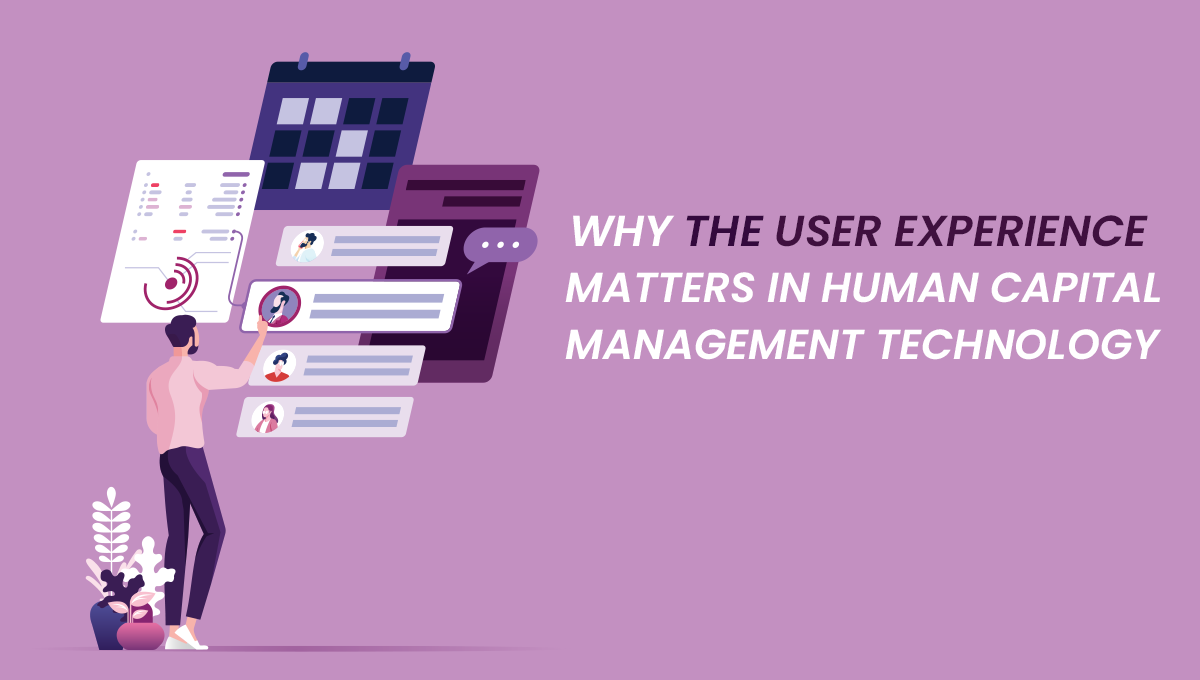
Anywhere you look at human capital management technology and practices, you will find discussions about the value of the user experience. It seems that buzzwords like “seamless,” “intuitive,” and “engaging” appear everywhere in the lexicon.
HR practitioners understand the need for a satisfying user experience and its impact on user adoption. The industry spends a lot of resources on change management to achieve the level of user adoption of technology that will drive business results.
Too many fall short. While their implementations produce high levels of usability, they don’t deliver an engaging user experience.
The problem may be that they fail to understand that usability is only one component of the user experience. Usability, as defined by ISO 9241-11, is “the extent to which a product can be used by specified users to achieve specified goals with effectiveness, efficiency and satisfaction in a specified context of use.”
The user experience encompasses the entire experience, much of which has little or nothing to do with how software works. We see many examples in the consumer market.
The Consumer Experience
Over the past few years, online customer experiences reshaped user expectations in business software. We can take a cue from online shopping to understand how the experience develops their perceptions.
In consumer marketing, we go beyond the transaction to shape the entire experience before, during, and after the sale. We create brand and product awareness through multiple communication channels. We support the decision process with more information and learning. We draw buyers into the purchase, then we support the sale with ongoing communication and learning to foster brand loyalty.
We can visualize the result as a hierarchy of satisfaction.
- Utility. I can find a product and purchase it.
- Usability. It is easy to find a product and buy it.
- Desirability. I like the process of finding and purchasing a product.
- Brand Experience. I feel a connection to the brand and product and will purchase it again.
Fostering the customer experience at the engagement level requires more than a satisfactory transaction. It entails customer support, customer education, ongoing communication, and building a sense of community.
Application to Human Capital Technology
To apply this to human capital management, let’s examine it in the context of a request for time off.
The process seems simple. An employee requests time off, and a manager approves it -- but there is much more to the experience, and more than one user has the experience.

Developing an engaging process for time off requests and approval has important usability elements. For the employee, we can display a calendar that shows workdays, summary balances that show PTO available, and recent history. Perhaps a link to scheduled products or other work events would be helpful.
For the manager, include resources to help them manage staffing levels, projects, and other work activities affected by the absence to prevent work disruption.
Elements Outside the Transaction
To create an engaging experience, we present it in the context of communications outside the transaction: work/life balance, a supportive culture, and policies that demonstrate that the company values employees’ time and contribution. Only then can we create an experience that strengthens the personal connection to the organization.
For many transactions that seem mundane, we can create an engaging experience by helping users understand why it is important. For example, creating a job requisition can seem like a routine, tedious task. We can improve the experience by helping each user understand why it is necessary, how it works as a system communication tool, and why it helps hiring managers to select the right person to fill a position.
The Takeaway
We can work with software designers and configuration teams to make transactional processes easy and fun, but we can gain a higher level of engagement by thinking outside the transactions.
 Phenom eCloud is a comprehensive technology solutions provider committed to empowering businesses to overcome challenges, enhance their workforce capabilities, and achieve superior outcomes.
Phenom eCloud is a comprehensive technology solutions provider committed to empowering businesses to overcome challenges, enhance their workforce capabilities, and achieve superior outcomes.




Leave a Comment